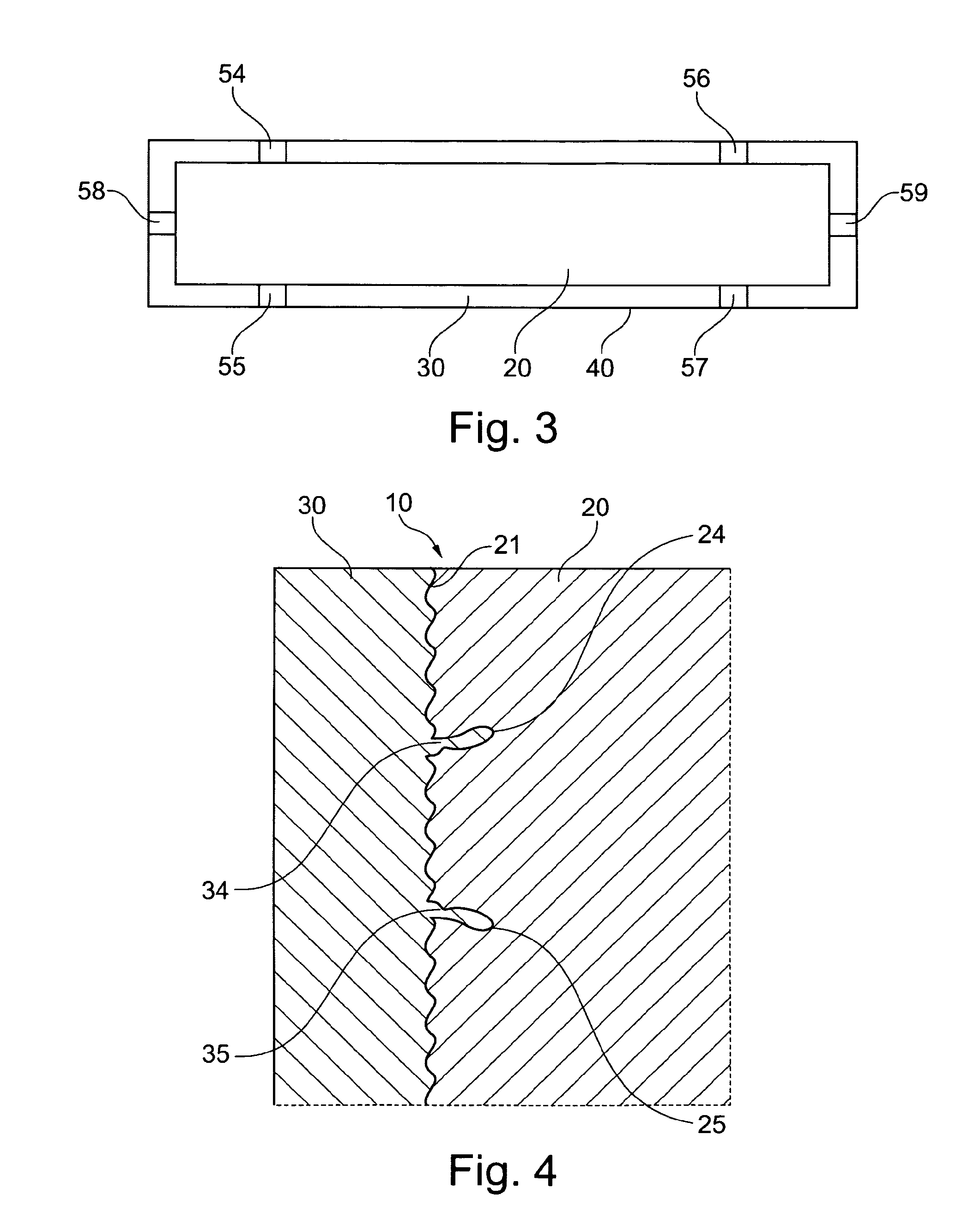Composite material and method for producing a composite material
a composite material and composite material technology, applied in the field of composite materials, can solve the problems that the process step of adhesion bonding is additional time and cost-intensive, and achieve the effect of simple and cost-efficien
- Summary
- Abstract
- Description
- Claims
- Application Information
AI Technical Summary
Benefits of technology
Problems solved by technology
Method used
Image
Examples
first embodiment
[0025]According to what is shown in FIG. 1, the composite material 10 according to the invention is produced in that an aluminum foam body 20, which represents a non-limiting example of a metal component, is arranged in a casting mold 40. By means of retaining elements 52 to 55, which may be designed as retaining plates or mandrels, the aluminum foam body 20 is fixed in the casting mold 40 so that it cannot move horizontally. Moreover, the aluminum foam body 20 is secured in the casting mold 40 against movement in the vertical direction by retaining elements 58 and 58, which may also be designed as retaining plates or mandrels. In order to efficiently prohibit the aluminum foam body 20 from floating in the casting mold 40 when the Lauramid 30 is poured, a retaining element 51 in the form of a heavy holding block exerts a force from above on the aluminum foam body 20. As can be seen from FIG. 1, the aluminum foam body 20 is completely enclosed by Lauramid 30. To put it more exactly, ...
second embodiment
[0029]According to FIG. 2, in the composite material 10 according to the invention, the metal component is designed as a flat aluminum foam plate 20. The aluminum foam plate 20 comprises a first main surface 21 which is shown at the left of FIG. 2 and a second main surface 22 which is shown at the right, both surfaces being almost completely covered by Lauramid 30. As can be taken from FIG. 2, the end face of the aluminum foam plate 20 protruding at the top of the casting mold 40 is not covered by Lauramid, and also those sites where the retaining elements 52 to 55 rest against the aluminum foam plate 20 while the Lauramid is poured into the casting mold 40 are free from Lauramid. A retaining plate for securing the aluminum foam plate 20 against floating during the pouring process is not shown in FIG. 2 for the sake of simplicity, and anyway, does not form part of the composite material 10 according to the invention.
[0030]For producing the second embodiment of the composite material...
PUM
| Property | Measurement | Unit |
|---|---|---|
| thickness | aaaaa | aaaaa |
| temperature | aaaaa | aaaaa |
| temperature | aaaaa | aaaaa |
Abstract
Description
Claims
Application Information
 Login to View More
Login to View More - R&D
- Intellectual Property
- Life Sciences
- Materials
- Tech Scout
- Unparalleled Data Quality
- Higher Quality Content
- 60% Fewer Hallucinations
Browse by: Latest US Patents, China's latest patents, Technical Efficacy Thesaurus, Application Domain, Technology Topic, Popular Technical Reports.
© 2025 PatSnap. All rights reserved.Legal|Privacy policy|Modern Slavery Act Transparency Statement|Sitemap|About US| Contact US: help@patsnap.com


